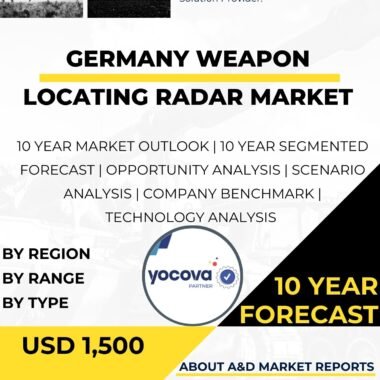Description
The close-in weapons systems (CIWS) market in Japan has seen significant growth and strategic importance in recent years, driven by the nation’s focus on enhancing its defense capabilities and addressing security challenges in the Indo-Pacific region. CIWS play a critical role in modern naval operations, providing a last line of defense against various airborne threats, such as anti-ship missiles, rockets, and aircraft, to protect naval vessels from potential attacks.
Japan’s security concerns are influenced by various factors, including the evolving global security landscape, regional tensions, and the increasing sophistication of anti-ship missiles and other aerial threats. As a result, Japan has been proactive in modernizing its naval forces and investing in advanced CIWS to safeguard its maritime interests and protect its naval assets.
One of the primary applications of CIWS in Japan is in the naval sector. The Japan Maritime Self-Defense Force (JMSDF) has integrated various CIWS into its fleet, significantly enhancing its ability to defend against airborne threats. CIWS serve as a critical component of the JMSDF’s layered defense strategy, complementing other naval air defense systems and providing a close-in protective envelope around naval vessels.
The deployment of CIWS allows the JMSDF to achieve increased preparedness for potential aerial threats, conduct effective surveillance and tracking of incoming threats, and engage hostile targets with high precision. CIWS play a vital role in countering saturation attacks, where multiple missiles or aircraft are launched simultaneously, by engaging and neutralizing multiple targets in rapid succession.
Moreover, Japan’s commitment to indigenous defense capabilities has driven the development of domestically produced CIWS solutions. Japanese defense companies have been actively involved in research, development, and production of advanced CIWS tailored to Japan’s specific requirements. This collaboration between the government and the domestic defense industry fosters innovation and contributes to the growth of the domestic CIWS market.
In addition to the defense sector, Japan’s CIWS market is influenced by its maritime security concerns and its focus on regional stability. As an island nation heavily reliant on maritime trade, Japan’s maritime interests are critical to its economic prosperity. CIWS play a crucial role in protecting commercial vessels from potential threats, such as piracy or terrorist attacks, in the high seas and in areas prone to maritime disputes.
Furthermore, Japan’s commitment to international security cooperation has also driven the acquisition of specialized CIWS. The JMSDF has participated in international naval exercises and joint operations, contributing to regional security and stability. CIWS enhance the safety and effectiveness of multinational naval operations, enabling better protection for naval assets and contributing to maritime security in the Indo-Pacific region.
The CIWS market in Japan also benefits from its alliance with the United States. As part of its defense cooperation with the U.S., Japan has access to advanced naval technologies and expertise. The U.S. has been a key supplier of CIWS and other naval defense equipment to Japan. This alliance strengthens Japan’s naval capabilities and contributes to regional security and stability.
Challenges in the CIWS market in Japan include addressing potential threats from emerging technologies, such as unmanned aerial systems (UAS) and hypersonic weapons, which can pose new challenges for naval defense systems. As adversaries develop more sophisticated and unpredictable aerial threats, Japan must continuously upgrade its CIWS capabilities and tactics to stay ahead of potential threats. This necessitates ongoing research and development efforts to enhance target detection, tracking, and engagement capabilities.
Moreover, ensuring the interoperability of CIWS with other elements of the JMSDF’s force structure is crucial for efficient and effective naval operations. Standardizing equipment, communication systems, and tactics across different vessels and naval units requires careful planning and coordination.
Cost considerations also influence Japan’s CIWS procurement decisions. Developing and acquiring advanced CIWS can be expensive, requiring prudent budget allocation and prioritization. Japan must balance investing in cutting-edge technologies with maintaining other critical aspects of its naval defense capability.
In conclusion, the CIWS market in Japan has seen significant growth and strategic importance, driven by the nation’s focus on enhancing its defense capabilities and addressing security challenges in the Indo-Pacific region. CIWS play a critical role in modern naval operations, protecting naval vessels from aerial threats. The collaboration between the government and the domestic defense industry, as well as international partnerships with allied nations, fosters innovation and contributes to the growth of the domestic CIWS market. Challenges related to emerging threats, interoperability, cost considerations, and technology development must be addressed to further enhance Japan’s CIWS capabilities and ensure its ability to protect its naval assets and contribute to regional and global maritime security. With its strategic focus on modernizing its naval forces, Japan remains committed to leveraging advanced CIWS to enhance its maritime defense capabilities and safeguard its maritime interests in the Indo-Pacific.




